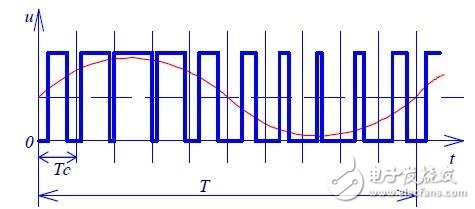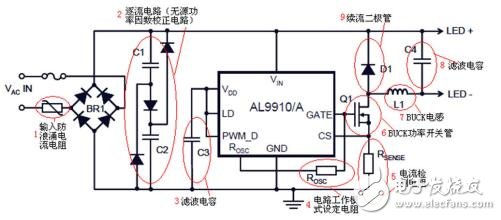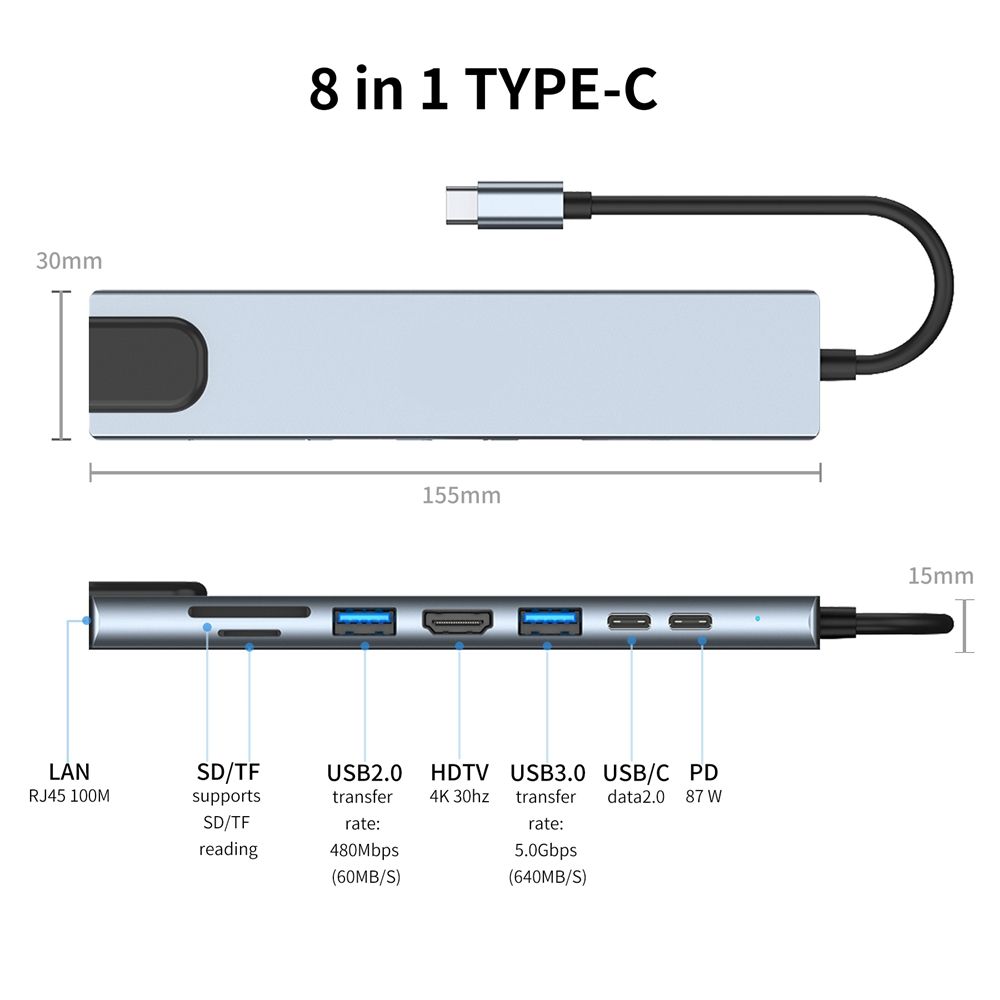Pulse Width Modulation (PWM) is a very effective technique for controlling analog circuits using the digital output of a microprocessor. It is widely used in many fields from measurement and communication to power control and conversion, with simple and flexible control. And the advantages of dynamic response and become the most common control method of power electronics technology. The pulse width modulation (PWM) control method is to control the on/off of the switching device of the inverter circuit, so that the output end obtains a series of pulses of equal amplitude, and these pulses are used instead of the sine wave or the required waveform. That is, a plurality of pulses are generated in a half cycle of the output waveform so that the equivalent voltage of each pulse is a sinusoidal waveform, and the obtained output is smooth and the low harmonics are small. By modulating the width of each pulse according to a certain rule, the output voltage of the inverter circuit can be changed, and the output frequency can also be changed. As shown in FIG. 1, the pulse width modulation principle diagram is shown. Figure 1 Pulse width modulation schematic For example, by dividing the sinusoidal half-wave waveform into N equal parts, the sinusoidal half-wave can be regarded as a waveform composed of N pulses connected to each other. If the above pulse sequence is replaced by the same number of rectangular pulse sequences of equal width and not equal width, the midpoint of the rectangular pulse coincides with the midpoint of the corresponding sinusoidal equal division, and the rectangular pulse and the corresponding sinusoidal partial area (ie, impulse) are made. Equal, you get a set of pulse sequences, this is the PWM waveform. According to the principle that the impulse equal effect is the same, the PWM waveform and the sine half wave are equivalent, as shown in FIG. 2 is a sine wave PWM modulation waveform. Figure 2 sine wave PWM modulation The PWM signal drive is one of the LED drive power supplies. Many LED applications require dimming, such as LED backlighting or architectural lighting dimming. The dimming function can be achieved by adjusting the brightness and contrast of the LEDs. Simply reducing the current in the device may allow adjustment of the LED illumination, but having the LED operate below the rated current can have many undesirable consequences, such as chromatic aberration. A replacement for simple current regulation is to integrate a pulse width modulation (PWM) controller in the LED driver. The PWM signal is not used directly to control the LED, but rather controls a switch, such as a MOSFET, to provide the required current to the LED. The PWM controller typically operates at a fixed frequency and adjusts the pulse width to match the desired duty cycle. The application's system simply needs to provide wide and narrow digital pulses to simply change the output current. To adjust the brightness of the LED. Most current LED chips use PWM to control LED illumination. To ensure that people do not notice significant flicker, the frequency of the PWM pulse must be greater than 100 Hz. The main advantage of PWM control is that the dimming current through PWM is more accurate, and the chromatic aberration when the LED is illuminated is minimized. As shown in Fig. 3, the pulse width modulation (PWM) LED driver control circuit is shown. Figure 3 Pulse Width Modulation (PWM) LED Driver Control Circuit The role of the PWM signal in the LED driver power supply is self-evident, so how can we make a high-quality PWM driver power supply? Based on the 512M memory depth, Guangzhou Zhiyuan Electronics ZDS4054PLUS oscilloscope can observe the change of pulse width length when the PWM driver controls LED light changes for a long time, which is convenient for engineers to accurately adjust the brightness of the light. The waveform refresh rate of 1 million times per second and the rich trigger mode quickly capture the PWM signal, and in the ZOOM amplification mode, the waveform details can be analyzed. Figure 4 shows the PWM signal modulation waveform. Figure 4 PWM modulation signal At the same time, the most important thing in the LED driver power supply is to accurately measure the pulse width signal. The ZDS4054PLUS oscilloscope can accurately measure the parameters such as pulse width, amplitude and signal rise time based on 51 parameter measurements, greatly speeding up the research and development process. The PWM waveforms that are triggered each time are stored by the segmentation storage method for analysis. Figure 5 shows the PWM signal amplification waveform measured using the ZDS4054Plus oscilloscope. Figure 5 PWM signal ZOOM amplified waveform Type-C interface has strong expansion ability, can transmit video and video signals, expand to a variety of audio and video output interface, such as HDMI, VGA, DVI interface, and even achieve 4K resolution of the extended transmission. The Type-c interface provides bidirectional power supply, which can charge the device itself or power external devices.USB HUBS has better data transmission capability and higher charging power. USBType-C went into mass production in August 2014, using the 3.1 standard. Compared with the interface of USB2.0 used in early smartphones, the transmission speed is improved a lot, and the maximum data transmission speed can reach 10Gbit/ s. And type-c supports USB-PD power supply standard, the maximum power supply can be up to 100 watts. Different from the traditional USBType-A and Type-B interfaces, the new Type-C interface is slimmed down in size to 8.3*2.5mm, which is more suitable for use in increasingly miniaturized electronic devices.
Supports positive and negative insertion. 100% of the players who use USB interface have encountered the embarrassment of "the positive plug is wrong, the negative plug is wrong, and the positive plug is right". Because USB-C IS POSITIVE AND NEGATIVE CAN be inserted, professional point is to say that the interface does not have directionality, with much more convenient. type-c charging port, support PD fast charging protocol, can be charged while using the computer, not afraid of running out of power. HDMI interface, I like HDMI to support audio and video transmission, high resolution support 4K/2K. Interface is common, LCD TV, monitor, projector are generally also some (like to connect to TV, audio and video synchronous transmission).vga interface, this is a very common interface, most of the projector, monitor have this interface, can be connected to vga line use, support 1080P resolution. Gigabit network port, although now almost everywhere there is a wireless network, but sometimes it is not enough for you, such as playing games, the network speed is slow, delay. And then he dropped the line right in the middle of his victory. So if you have a network cable and you can connect directly to the Internet, it's great to support gigabit networks.
Type C Usb Hub,Fast Charging Usb Hub,Hub Type C To Usb,Usb 3.1 Type C Hub Henan Yijiao Trading Co., Ltd , https://www.yjusbcable.com





November 20, 2024